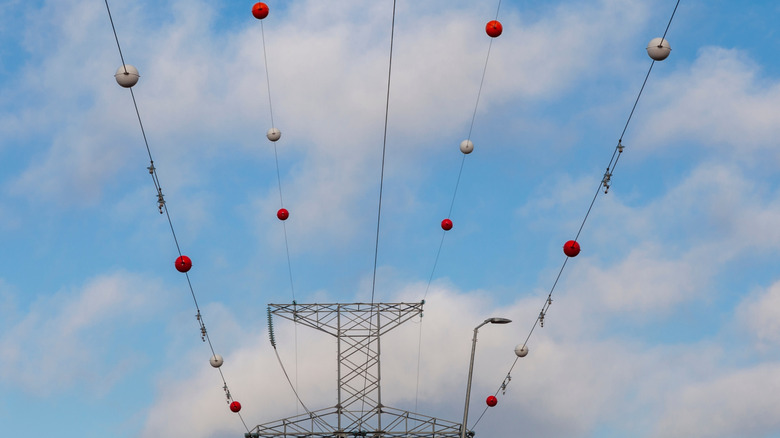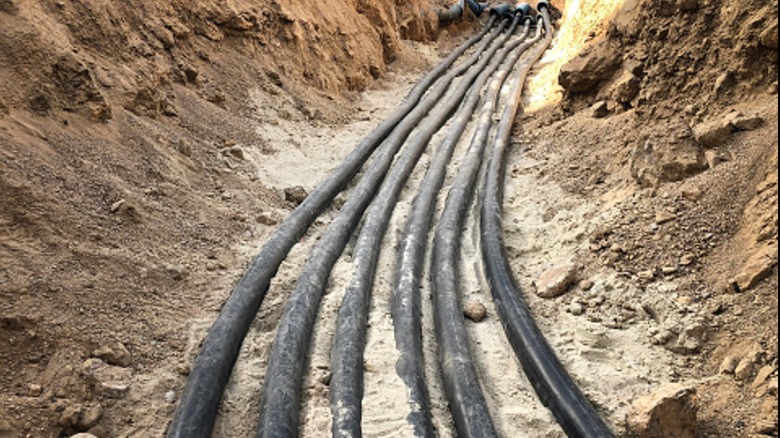What Are Those Orange Balls On Power Lines For?
Have you noticed brightly colored spherical objects affixed to some of the power lines overhead? There are several theories about these orbs. Are they meant to weigh down the lines in high winds? Or prevent lines from touching each other?
Nope. The real purpose is to prevent low-flying aircraft from unknowingly traveling into the power lines, which are difficult to see during flight. In the U.S. alone there are around 160,000 miles of lines carrying anywhere from 69,000 to 500,000 volts, making America's power grid a marvel of engineering. The colorful round markers, weighing around 17 pounds, are most often installed in areas near airports, freeway interchanges, mountain overpasses, and deep-set valleys. They're not always orange, either; their colors vary, with hues selected based on what will stand out best against a specific landscape.
These markers were implemented in the 1950s in states including Florida and Arkansas, but others, such as Colorado, didn't start installing them until the late '80s. That followed the 1988 crash of a Denver news chopper that hit several thick steel power cables strung across the South Platte River. Without any sort of marker (like colored balls) on the lines, the pilot/reporter and photographer were unaware of their proximity to danger until it was too late. And while helicopters actually resist plummeting to the ground — despite Hollywood's big myth about helicopter crashes – when power lines are involved, the result can prove fatal, as it did for the news helicopter's occupants.
Aircraft collisions, fallen trees, and fire risk: Why aren't the lines just buried?
Beyond the risk to pilots, aboveground power lines are susceptible to fallen tree limbs and can start wildfires. Trees are responsible for up to half of power outages. A branch doesn't even need to fall, just be close to a power line, and electricity can arc over small gaps. (Although it's not always trees that are to blame for the lights going out. Heat waves can also cause power outages.) A California power-company official even said fire risk from power lines could be reduced by up to 98% if cables were buried.
If aboveground wires cause so many issues, why not put them underground? The short answer is money. According to the California Public Utilities Commission, one mile of buried power lines costs $1.85 million to $6.1 million. And it's not just expensive in the Golden State. The U.S. Energy Information Administration says it can be five to 10 times more expensive to install underground lines. This is especially true in older neighborhoods, where there's little to no development space around densely packed structures.
In addition to installation cost, underground power lines are more challenging to maintain, outages from tree roots are still possible, and service interruptions on buried lines take longer to repair. Finally, customers of the utility company would likely bear these additional costs on top of their usual power bill.

